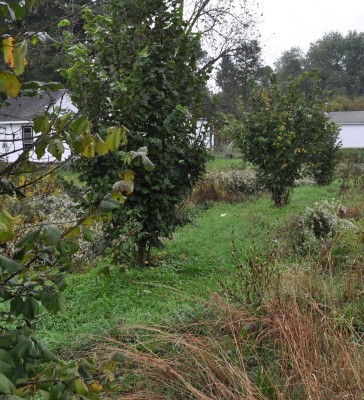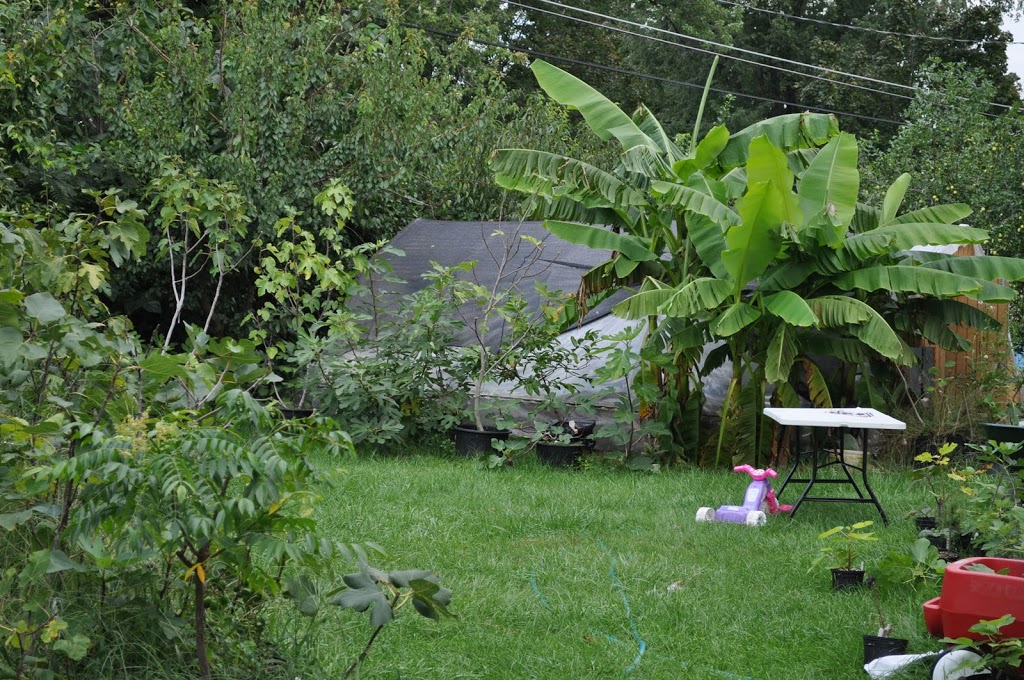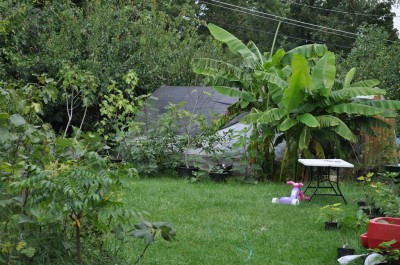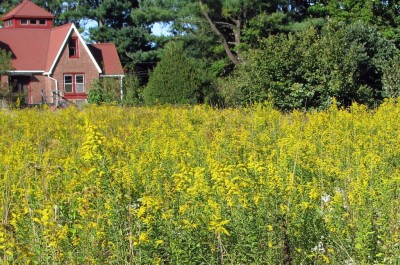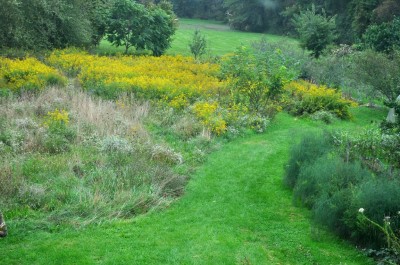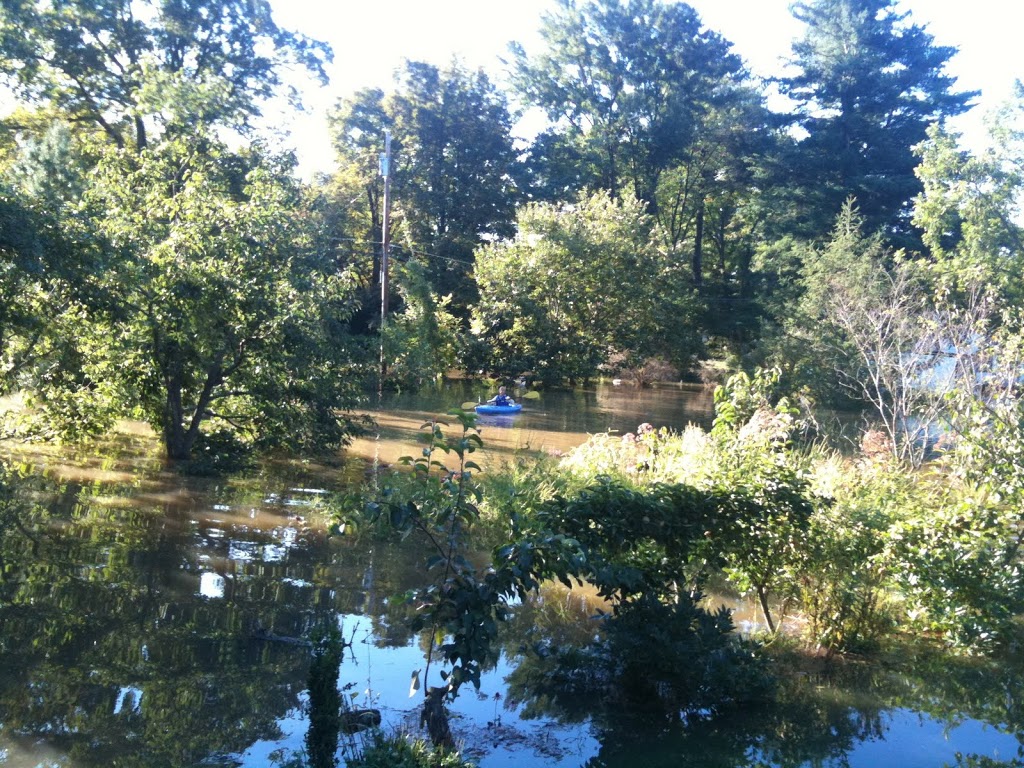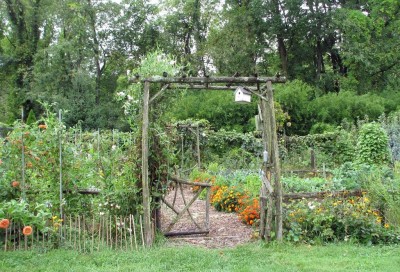It’s a tied score, 1 for the squirrels, 1 for me. At least since I started counting, which was last year. I had some squirrel issues in previous years, but last year is when all out war started. They cleaned out the raspberries and the gooseberries early in the season, and then started eyeing the blueberries. Anyone who reads “A Gardener’s Notebook” knows how I feel about blueberries, and the squirrels evidently picked up those vibes (with some ballistic coaxing) and left the blueberries alone. Not that they kept to their nearby forest homes; they scurried across the field in late summer to strip the hazelnut bushes of every single nut.
This year is different, very different. The squirrels didn’t eat even one raspberry or gooseberry, didn’t even eye the blueberries. And my harvest of hazelnuts is secure in bushel baskets.
In fact, I only saw a couple of squirrels the whole season. They were two young ones gamboling in the tree tops, taunting me in full view from the back window of my bedroom.
A multifaceted approach is responsible for this year’s victory. Two excellent cats are one line of defense, although I can’t imagine how cats could keep squirrels at bay. Perhaps the squirrels also saw me practicing my marksmanship. And finally, I let the field in which I planted the hazelnuts grow up into an overgrown meadow. I’ve never seen squirrels in high grass and other herbaceous vegetation, probably because it slows them down too much. (Then again, perhaps I’ve never seen squirrels in unmown meadow because I can’t see them in unmown meadow.)
To reduce competition for water and nutrients to the hazelnut plants from the meadow, I kept vegetation scythed down in a circle around each hazelnut bush and accessed the plants via a mowed path that originates only 50 feet across mowed lawn from my deck. My two dogs, Leila and Scooter, spend a lot of time sleeping on that sunny deck, so it would take a bold squirrel indeed to make the journey across the lawn and then down that no-exit, mowed path in overgrown meadow.
————————————————
As for anyone who pooh-poohs my obsession with squirrels, mark my words: In a few years you’ll consider them much, much worse problems than deer. Some people tell me that squirrels are even eating their tomatoes. Fencing is, obviously, useless against squirrels.
Squirrels have never eaten my tomatoes. I’ve never even seen them in my vegetable gardens although black walnut seedlings that sometimes pop up here and there are evidence of their occasional trespass.
I wonder if squirrels eat lettuce; I hope not, because I have some nice heads developing in the garden and in seed flats. This is the time of year that takes advance planning with lettuce because, although the plants enjoy the cooler weather, it, along with shorter days, drastically slows growth.
I aim to grow enough lettuce for salads all winter so must have enough plants started to slowly mature in the weeks and months ahead. If the plants are too small, they won’t size up when it’s their turn to be eaten. If the plants are too large, they bolt, that is, make seedstalks and turn bitter. Right now, I have two rows of mature heads in the garden and over 150 seedlings of various sizes. All those seedlings take up only about 4 square feet of space. The smaller seedlings will get transplanted into the greenhouse sometime soon.
———————————————–
Greenhouse lettuce can tolerate a little shade right now, but not in a few weeks. That works out perfectly, because right now the greenhouse is shaded by 3 large fig trees growing within. They are three different varieties, each loaded with fruit.
Kadota is the best-tasting of the three, with a sweet, rich flavor held in a chewy skin. The problem is that Kadota likes dry weather, as do all figs, to some degree. With the current humid weather and incessant rain, many of the Kadota fruits rot just as they are about to ripen.
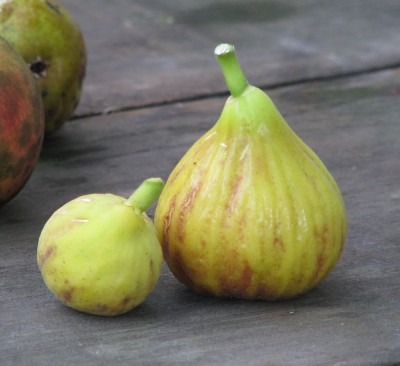 My old standby, Brown Turkey, sweet, small, and dark purple, does better. The tree has been ripening fruits since about early September.
My old standby, Brown Turkey, sweet, small, and dark purple, does better. The tree has been ripening fruits since about early September.The best of the lot, in terms of flavor (not as good as Kadota but, still, very good) is Green Ischia, also known as Verte. This variety bears fruits on stems that grew last year as well as, like my other two varieties, stems that started growing this year. Green Ischia’s earliest figs ripen in July on last year’s stems, followed by more fruits, beginning in September, on this year’ stems. The figs are sweet and very large and juicy, so much so that they begin to burst open if harvest is delayed too long. My Green Ischia, by the way, is probably not Green Ischia; figs are notorious for having multiple names and for being mislabeled, as I think mine was in the nursery.
The fig crop will end in a few weeks, the plants’ leaves will fall, and I’ll cut back all stems, except for a few on Green Ischia for next year’s early crop, down to about 4 feet high. Greenhouse lettuce can then bask freely in whatever sunlight autumn and winter sun offers.
 My old standby, Brown Turkey, sweet, small, and dark purple, does better. The tree has been ripening fruits since about early September.
My old standby, Brown Turkey, sweet, small, and dark purple, does better. The tree has been ripening fruits since about early September.

